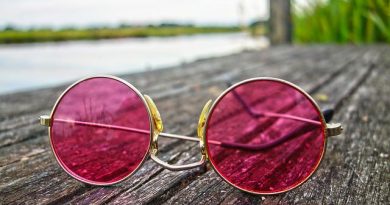Are All Tahitian Pearls Black?’ and Other Pearl FAQ Answers
Are all Tahitian pearls black? What is the difference between cultured pearls and natural pearls? Are freshwater pearls inferior to saltwater pearls? Are South Sea Pearls Really Gold?
Good question. With all the different colors and types of pearls, it’s hard to know exactly what you’re looking at. For pearl buyers or gem enthusiasts looking to learn more, here are answers to some of the most frequently asked questions about pearls.
Are all Tahitian pearls black?
Tahitian cultured pearls are not only black, but also not cultured in Tahiti. Called “black” for their odd dark color, Tahitian cultured pearls can also be gray, blue, green, and brown. And they are grown in the lagoons of small islands in a group known as French Polynesia. Tahiti, the largest island, serves as the group’s commercial hub rather than a pearl culture mecca.
Tahitian pearls have been cultured for about two years in Pinctada margaritifera cumingi, a large mollusk native to French Polynesia. One of the differences between this unique oyster and other species is the dark color of its inner shell. This so-called “black-lipped” oyster also has black fringes – the “lips” give the animal its descriptive name.
Today, the most sought after Tahitian cultured pearls range in color from dark greenish gray to bluish gray with pink or purple hues. The color of pearls is determined by a number of factors including the variability of the host oyster, the change in color of the implanted donor mussel tissue, the amount and thickness of the mother-of-pearl layer, and variation. growth environment such as temperature and water quality.
The most common Tahitians are variations of gray, black, green, and blue, but other colors exist.
Medium in size from 8mm to 1mm, Tahitian cultured pearls, especially those of round quality, are very expensive.
According to the latest information from the Gemological Institute of America, up to 0% of implanted pearls produce cultured pearls of gem quality, but only about 5% of the pearls they produce are in the shape of a gem. circle.
And only 1-2% of the whole harvest will yield the best quality round cultured pearls. No wonder a Tahitian pearl thread is so expensive! If you want to wear Tahitian cultured pearls, one way to do that without breaking the bank is to choose a pendant style with a single pearl, pearl earrings, a ring with a single pearl or baroque pearl (asymmetrical). These designs are also exotic and much more affordable than a matching yarn.
What is the difference between cultured pearls and natural pearls?
Natural pearls are formed when an irritant, such as a parasite, enters pearl-producing animals such as oysters or shellfish. To protect themselves, animals coat the irritant with nacre, a combination of organic substances that also make up what’s known as nacre.
Over time, layers of mother-of-pearl build up around the intruder and eventually form the organic gem we all know as pearls.
Cultured pearls are formed in the same way as natural pearls, with one major difference: they are born not by chance but by will, when man interferes with nature. To produce cultured pearls, a highly skilled technician, known as a nucleation worker, creates the process of growing pearls by surgically placing a stimulant – a mother-of-pearl bead and a piece of pearls. mantle, often – into a mollusk.
The animal is then returned to the water and monitored, cleaned, etc. until the pearls are ready to harvest.
The Chinese have been culturing freshwater honeycomb pearls (pearls that grow under the mantle inside an animal’s shell) since the 13th century, but Japanese Kokichi Mikimoto is said to have developed the culture technique. Pearl. In the early 1920s, Mikimoto was selling his cultured pearls around the world.
Natural pearls may be very beautiful, but due to overfishing, pollution and other factors, they are indeed a rarity. As such, almost all pearls sold today are cultured pearls. There are two main types of freshwater and saltwater. South Sea cultured pearls, Tahitian cultured pearls and Akoya cultured pearls are all saltwater pearls. Cultured pearls of all types can be found in jewelry stores around the world.
Are saltwater pearls better than freshwater pearls?
It’s up to you who you ask, but many pearl experts today agree that freshwater cultured pearls rival the beauty of their saltwater cousins. With improved culture techniques, freshwater pearl farmers have produced beautiful, round, shiny pearls that are a huge improvement over the wrinkled, rice-shaped gems that are characteristic of Europe’s freshwater pearl harvest in the not-so-distant past.
Produced mainly in China, freshwater pearls are usually artificial or mantle tissue alone (rather than pearls). Because they do not contain starting pearls, the cored freshwater pearls in fabrics are 100% pearl. This gives them a beautiful shine and a durable surface that won’t crack or peel off easily to reveal the pearl inside.
In contrast, pearls that are artificially grown and harvested too early usually have only a thin layer of nacre that peels off or flakes off. Here’s a big problem: unlike many other gemstones, pearls cannot be polished to perfection.
Cultured Freshwater Pearls come in a variety of beautiful natural pastel colors including Cream, White, Yellow, Orange, Pink and Lavender. (Currently, flattering lavender pearls are very popular.) White pearls are bleached to increase their natural luminosity.
Black freshwater cultured pearls are treated with dyes or heat to produce their ink color.
In general, freshwater pearls are more abundant than other pearls, so they are generally more affordable.
Are South Sea Pearls Really Gold?
Yes. Pearls created from the oyster species aptly called “golden mussels” (P. maxima) can have a beautiful creamy yellow color, known as “gold” in the trade. (Silver variety of P. Maximum produces stunning white or silver pearls.) Cultivated in the South Sea, stretching from the southern coast of Southeast Asia to the northern coast of Australia, these pearls are raised in a one of the largest oysters used in pearl culture. Because they can




